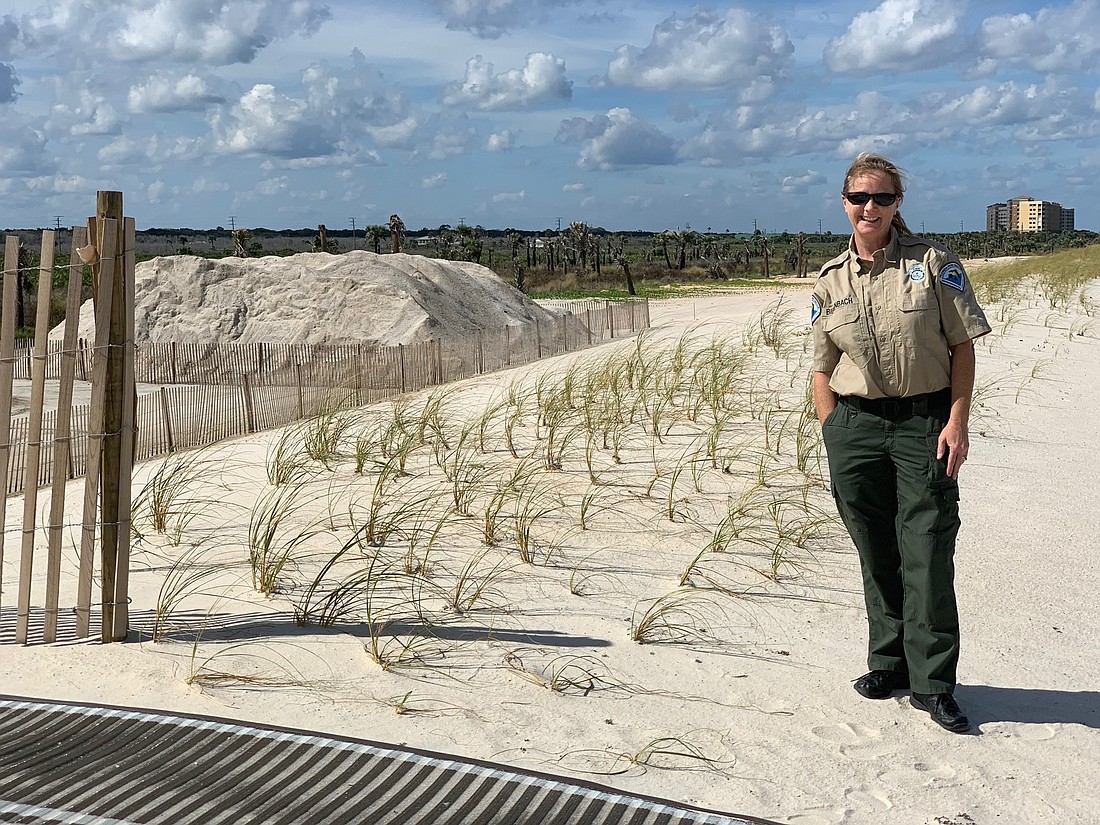- December 13, 2025

Gazing down a path in Washington Oaks Gardens State Park, visitors might notice a peaceful patch of sunlight. What they might not realize is that the patch is evidence of a tornado that plowed through the park during Hurricane Irma.
The park has seen its share of damage between Hurricane Matthew in 2016 and Irma in 2017. Saltwater intrusion from Matthew killed the once-green entrance to the park, on the west side of State Road A1A, destroying or damaging 120 acres of natural habitat.
Ospreys soar above, using the dead trees for nesting. A gopher tortoise pushes its way into the shrubs. Bright green vegetation has already emerged.
“What you can see now is remarkable,” Park Services Specialist Amy Biedenbach said. “This is nature repairing itself. … It is probably not going to look like [it once did] again in our lifetimes, but the truth is, it really shouldn’t. This is going to naturally turn into its own ecosystem.”
The rest of the park on the west side was relatively unscathed from the storms. The natural maritime hammock did its job protecting everything beneath it.
Across A1A, the east side of the park is now open. But it did not open until this September, having been closed since last year, when flooding from Hurricane Irma swallowed the dunes, the parking area, and the surrounding vegetation.
The vegetation on the east side is strikingly different from the west side. After removing most of the dead trees, the park services prescribed a controlled burn that introduced nutrients back into the ground. Now, saw palmettos and small outcroppings of burned trees line the roads.
“State parks are mandated, along with forestry and other areas, to introduce fire when we are able,” Biedenbach said. “We do it by prescription — prescribe a fire in a very specific area under perfect environmental conditions to fix and heal the property.”
Florida’s wildlife and plant life rely on wildfires.
Beyond the prescribed-burn area, a massive pile of sand looms next to new dunes. This is a contingency in the event the area endures another storm. When hurricane season is over, the sand will be used around the park.
The dunes don’t have the vegetation they held two years ago, but new sea oats, given some time alone to flourish, have taken root.
Liz Rourke, a long-time park volunteer, is impressed with the railroad vines that snake their way along the dunes. Where a large boardwalk once lifted visitors above the dune plants, Rourke makes her way across on a Mobi-Mat — the equivalent of an environmentally friendly runway to the beach to help the dunes recover.
“Recovery has taken a long time, but was worth the wait,” Rourke said.
The rebirth of these Florida habitats relies on a delicate balance between protecting the beach and maintaining its aesthetic appearance.
A year after Irma, the majority of the park has healed. The rest is open but forever changed. Generations from now, it may come close to resembling the park it once was, but in the meantime, the gopher tortoises, ospreys and even small alligators simply know it as home.